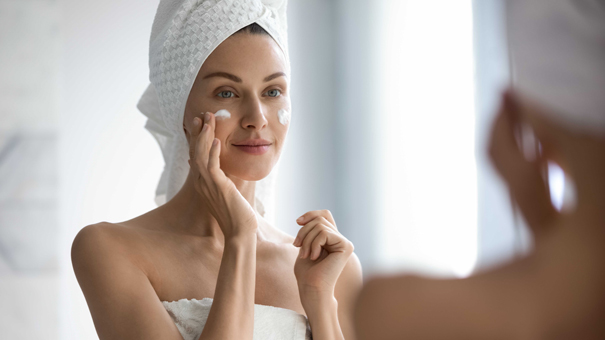
Hydrogen peroxide (H₂O₂) is a simple chemical compound made of hydrogen and oxygen — the same elements that form water, but with one extra oxygen atom. This extra oxygen makes hydrogen peroxide a strong oxidizing agent, giving it powerful disinfectant and antiseptic properties.
In hydrogen peroxide therapy, small amounts of diluted hydrogen peroxide are introduced into the body — either orally, intravenously, or through topical application — with the aim of increasing oxygen levels in tissues and supporting detoxification.
While hydrogen peroxide is best known for cleaning wounds or whitening teeth, some alternative medicine practitioners believe that it can also boost immunity, fight infections, and improve circulation.
How Does Hydrogen Peroxide Therapy Work?
Proponents of the therapy claim that when hydrogen peroxide breaks down, it releases oxygen into the bloodstream. This increase in oxygen may help the body:
- Eliminate toxins and pathogens
- Improve cellular metabolism
- Enhance immune response
- Reduce inflammation and fatigue
Some practitioners refer to it as a form of “oxidative therapy”, which aims to mimic the body’s natural defense system — since our immune cells also produce hydrogen peroxide to fight infections.
However, medical professionals emphasize that hydrogen peroxide therapy should only be conducted under expert supervision and never self-administered intravenously, as incorrect dosages or concentrations can cause serious harm.
The Science and the Controversy
Hydrogen peroxide therapy remains highly controversial. While anecdotal success stories are widely shared online, there’s limited scientific evidence to support its effectiveness for serious medical conditions.
The FDA (U.S. Food and Drug Administration) and CDC (Centers for Disease Control and Prevention) both warn against the internal use of hydrogen peroxide due to the risk of tissue damage, oxygen embolism, and other complications.
That said, research into low-dose oxidative therapies continues in some integrative health circles, with studies exploring whether controlled oxygen-releasing compounds could benefit immune or metabolic function in the future.
Common Uses of Hydrogen Peroxide in Everyday Life
Even if medical hydrogen peroxide therapy is controversial, household and topical uses of hydrogen peroxide are well supported and effective when used correctly. Here are some safe and beneficial ways to use hydrogen peroxide:
- First Aid and Wound Cleaning:
Hydrogen peroxide (3% solution) is a go-to antiseptic for minor cuts and scrapes.- Buy 3% Hydrogen Peroxide Solution on Amazon
- Buy 3% Hydrogen Peroxide Solution on Amazon
- Oral Health and Whitening:
Many mouthwashes and teeth-whitening kits use diluted hydrogen peroxide to kill bacteria and remove stains.
- Crest 3D White Professional Effects Whitestrips
- Household Disinfection:
Hydrogen peroxide is an eco-friendly cleaner that can sanitize kitchen surfaces, cutting boards, and bathrooms.
- Hydrogen Peroxide Multi-Purpose Cleaner
- Plant and Garden Care:
Some gardeners use hydrogen peroxide solutions to prevent root rot and improve soil aeration.
Safety Precautions and Warnings
If you’re considering hydrogen peroxide for therapeutic or household use, safety is key.
- Never ingest or inject hydrogen peroxide unless prescribed and supervised by a qualified medical professional.
- Use only food-grade hydrogen peroxide (35%) if you’re preparing dilutions for non-medical purposes, and handle it carefully.
- Store hydrogen peroxide in a cool, dark place, away from children and pets.
- For topical or cleaning uses, stick to a 3% dilution or less.
For safe, verified products:
- Buy Food Grade Hydrogen Peroxide (35%) on Amazon
- Check FDA consumer warnings about hydrogen peroxide therapy
Natural Alternatives to Hydrogen Peroxide Therapy
If your goal is to boost oxygen levels, detoxify, or enhance immunity, consider safer and well-studied alternatives:
- Ozone Therapy (Under Medical Supervision)
A regulated oxidative therapy that uses ozone gas (O₃) to improve circulation and oxygenation.
- Hyperbaric Oxygen Therapy (HBOT)
Patients breathe pure oxygen in a pressurized chamber — an FDA-approved treatment for several conditions.
- Learn more: Mayo Clinic – Hyperbaric Oxygen Therapy
- Learn more: Mayo Clinic – Hyperbaric Oxygen Therapy
- Nutritional Oxygen Support Supplements
- Oxygen Plus Energy and Recovery Canisters
- Cellfood Oxygen + Nutrient Supplement
- Lifestyle and Natural Methods
- Regular exercise to improve oxygen circulation
- Breathing exercises or yoga
- Antioxidant-rich foods (spinach, kale, berries, green tea)
Expert Perspective
While hydrogen peroxide therapy has passionate supporters in alternative health circles, mainstream medicine advises caution. The lack of strong clinical evidence, coupled with safety risks, means that self-experimentation can be dangerous.
However, this ongoing debate reflects a broader interest in oxygen-based therapies and their role in modern integrative medicine. The key takeaway is to stay informed, consult medical professionals, and use verified sources for any health decisions.
Final Thoughts
Hydrogen peroxide therapy may sound appealing as a natural detox or immune-boosting treatment, but it’s important to separate scientific facts from speculation. While it plays a valuable role in disinfection and daily hygiene, its internal medical use is not recommended without clinical supervision.
If you’re drawn to oxygen-based health approaches, explore safer and proven alternatives like hyperbaric oxygen therapy, ozone therapy, or simply optimizing your lifestyle for better oxygenation.
Recommended Reading:
- National Center for Complementary and Integrative Health (NCCIH)
- FDA Consumer Updates on Alternative Therapies
- Harvard Health: Benefits of Oxygen Therapy



